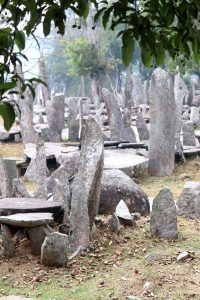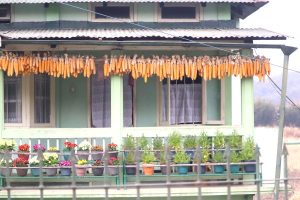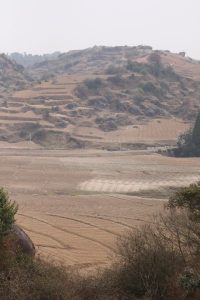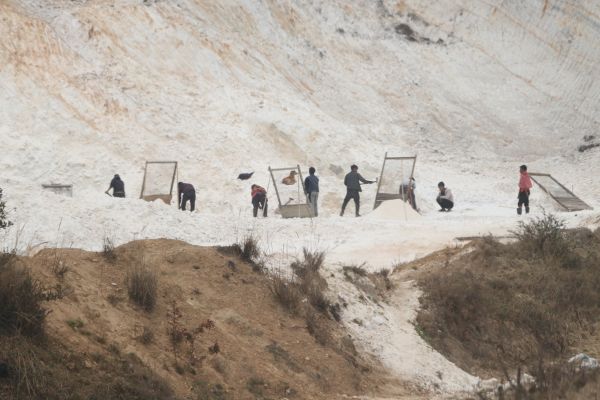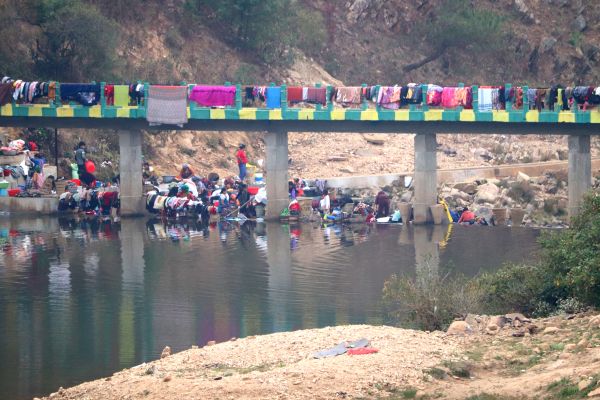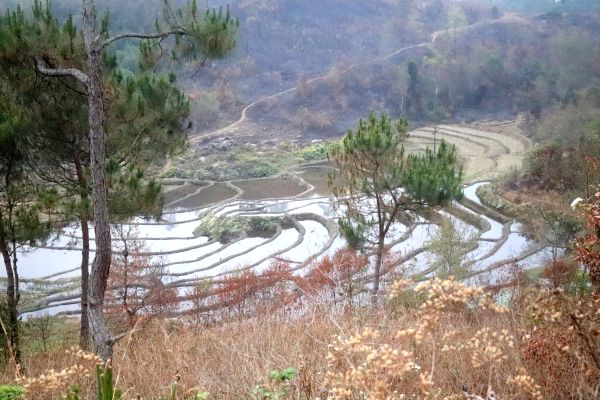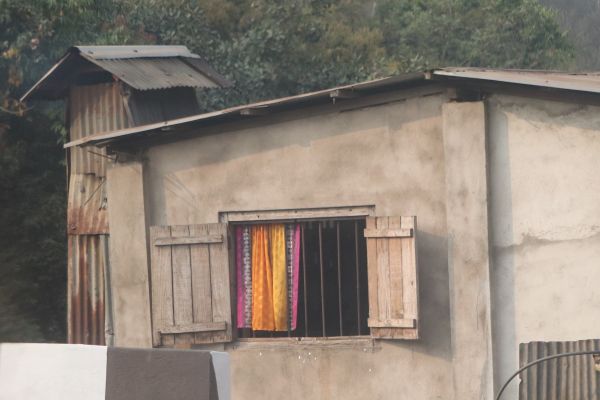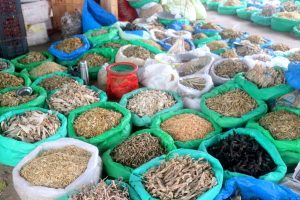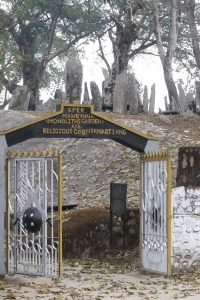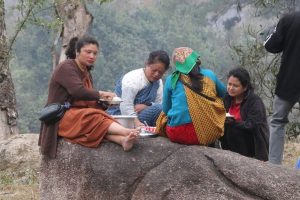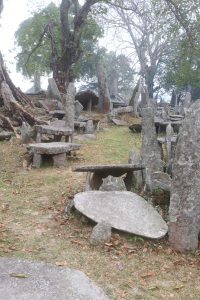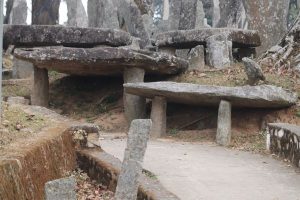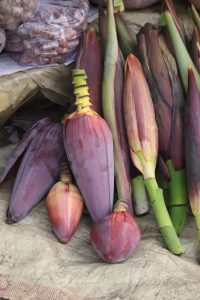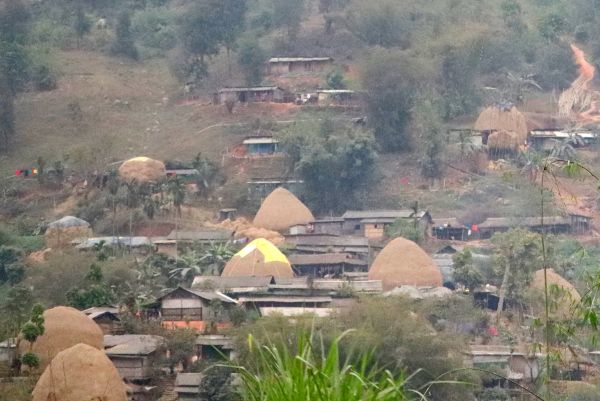There is more to Meghalaya then just the root bridges. They proudly promote the cleanest village of Asia – which, coming from The Netherlands, we skipped. Waterfalls and caves, hmm, we have seen those before, and they don’t necessarily excite us that much. There is the lake near Shillong, the state capital, which otherwise doesn’t seem to offer much. But what they hardly mention is a remarkable collection of monoliths, a place called U-Mawthaw-dur-Briew, or more simply, the monolith garden, near the town of Nartiang.
The landscape
Just getting to here from Sohra was already a nice experience, through small country roads and little villages. Rich agricultural area, with terraces for rice, but also for other vegetables, being prepared, in anticipation of the monsoon later this year. The weather isn’t great, unfortunately, pictures are a bit hazy. Another thing that fascinates me are the village houses, mostly corrugated iron, and their chimneys.
This is Khasi territory, the dominant tribe in Meghalaya, and they do have their own features – more Asiatic than the average Indian -, and dress. Stopping at the market in Nartiang, instead of market produce I focus the camera on the people, who mostly don’t mind, are proud to have their picture taken – and occasionally make me take another one, because the first wasn’t good enough!
The monolith park
The archaeological site of U-Mawthaw-dur-Briew is amazing. Hundreds, if not thousands of monoliths have been placed close to each other, each apparently representing an ancestor; some, like the tallest one, of eight meters high, were dedicated to Jaintia kings or warriors, from the times of the Jaintia kingdom. The oldest monoliths are thought to be some 500 years old, the latest are from the mid-19th C, after which the practice was discontinued. The flat-lying stones – called dolmens – are for women, the standing ones – menhirs – for the men, and the taller the menhir, the more important the warrior. How much of it is in its original place, I don’t know. The monoliths are in a park, with convenient walking paths in between groups of them. In one corner is a football pitch, where monoliths are conspicuously absent. But the collection of stones is an impressive sight, nevertheless, and does create an evocative atmosphere.

trucks overtaking trucks, leaving preciously little space for oncoming traffic especially if other cars start overtaking the two trucks!
Driving on and back to Guwahati, the spell of U-Mawthaw-dur-Briew is quickly broken. This is the Silchar-Guwahati road, with lots of traffic, especially slow-moving trucks. Where the one slightly faster slow-moving truck decides to overtake the slightly slower moving truck. On a two lane road. Nightmare, because for most people, including truck drivers, participating in traffic is very much an ‘I don’t care about the others’ exercise. The results of which we see along the road, in the form of trucks crashed into a rock wall, or saloon cars flattened by trucks – with the body, probably dead, as proof next to it. The highway campaign to promote safe driving, with mildly funny slogans like ‘Safety at Road is Safe Tea at Home’, ‘Driving Faster can Cause Disaster’, and ‘After Whisky Driving Risky’, doesn’t seem to work very well. (They remind us of a trip to Ladakh, long ago, where similar slogans were used.)
next: Assam’s capital Guwahati
